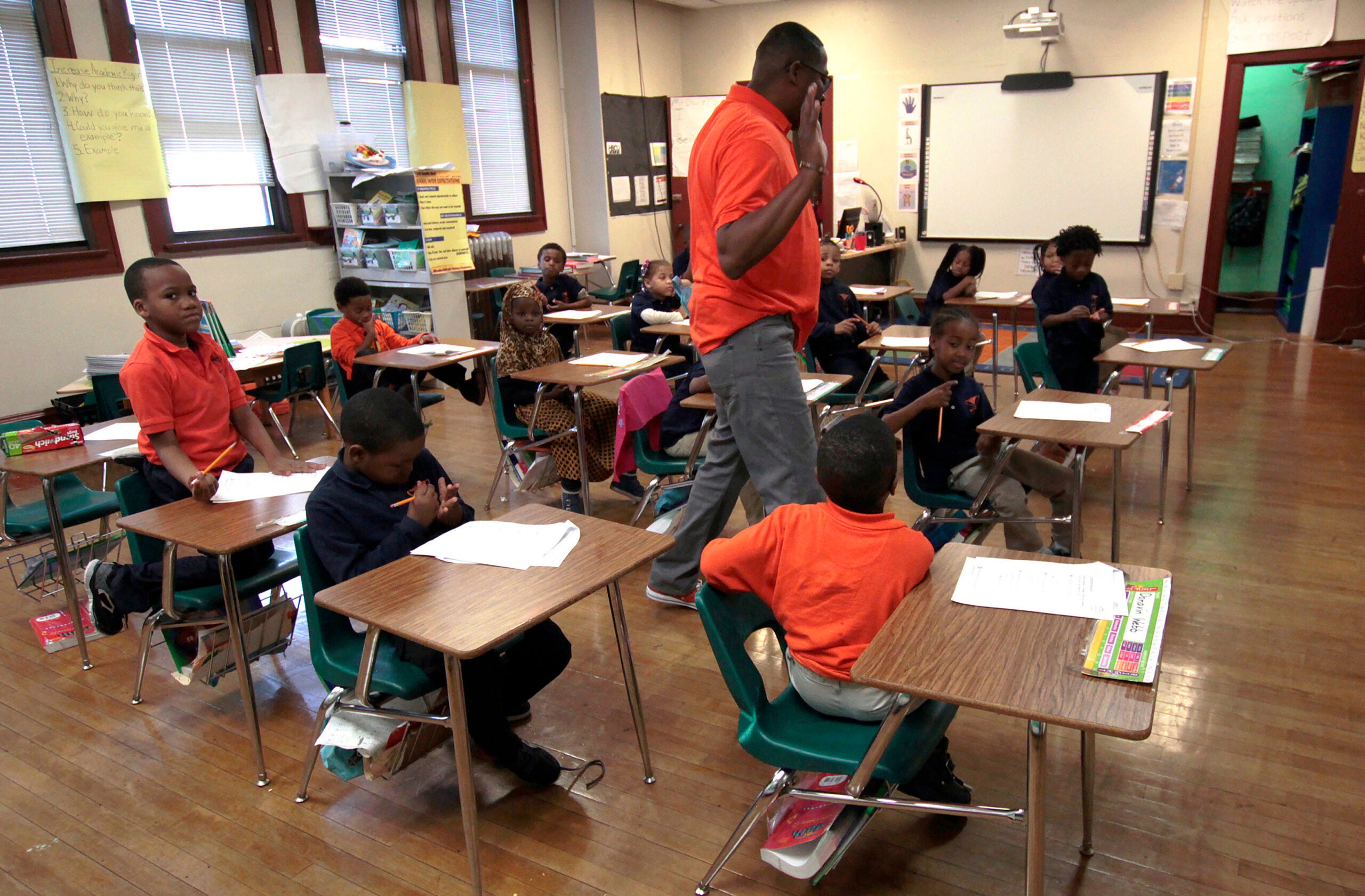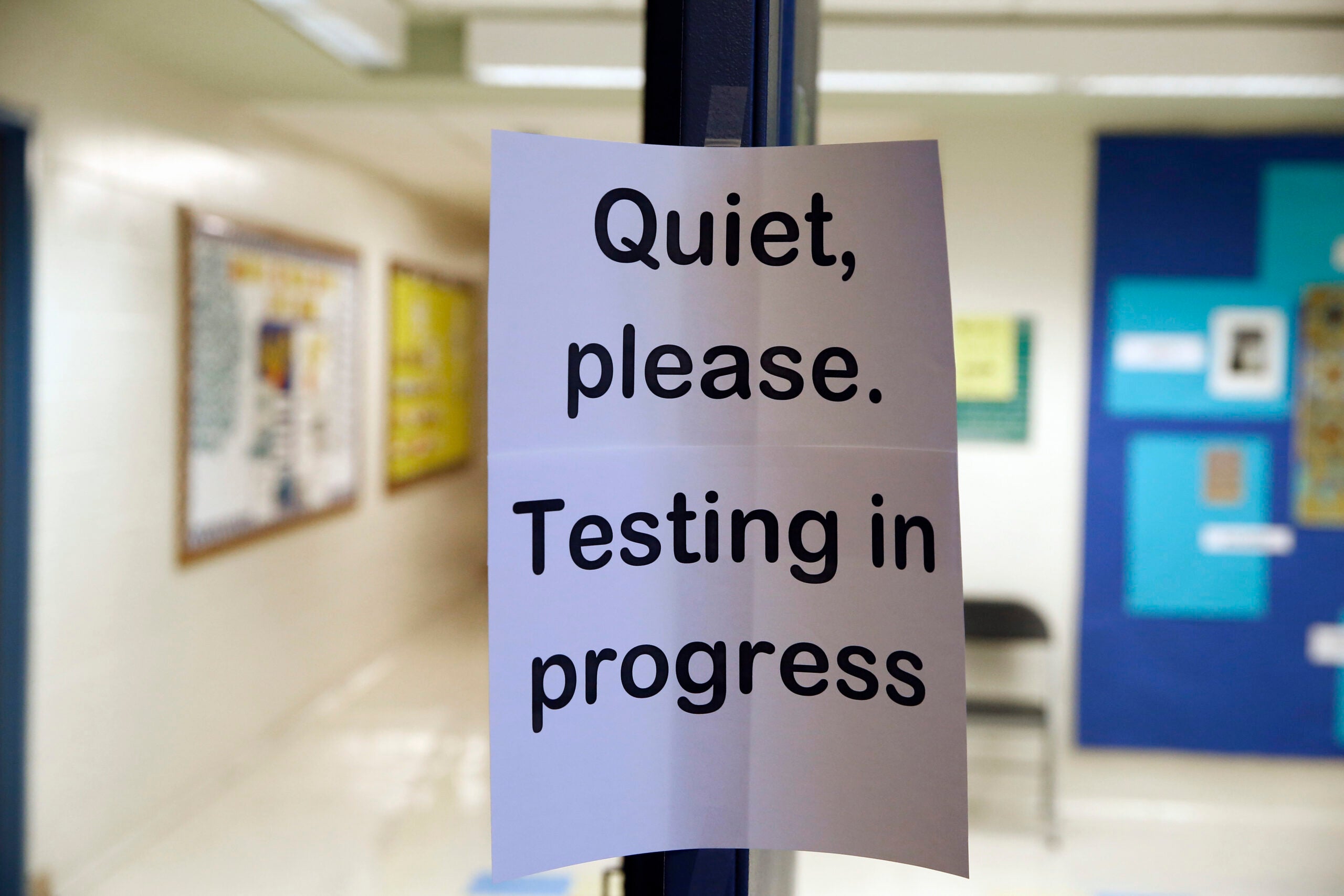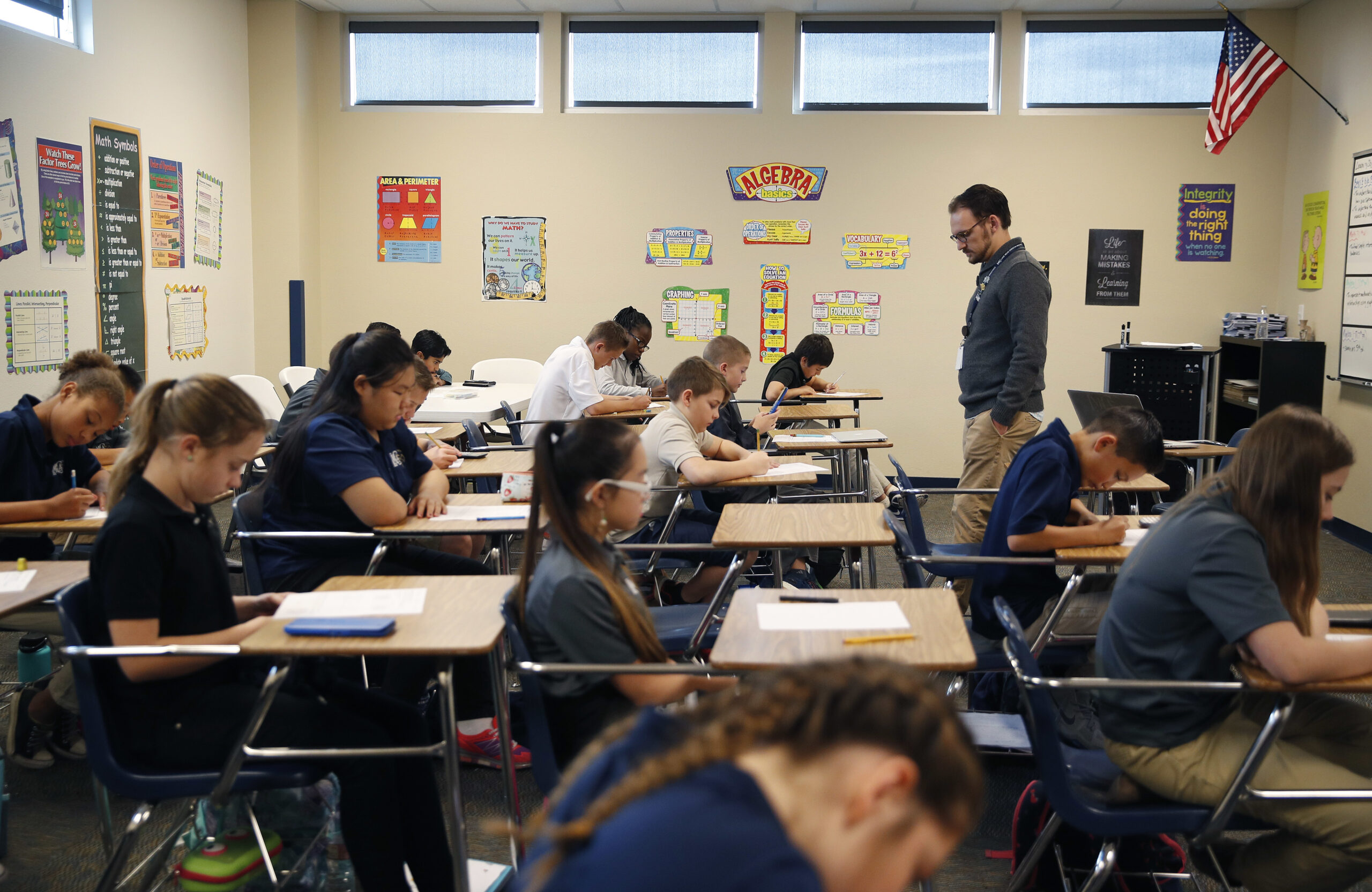State test scores released by the Wisconsin Department of Public Instruction show almost half of students are testing at grade level in reading and math.
That’s a significant jump from last year, when less than 40 percent of students were considered proficient in those subjects.
But this year’s scores can’t be compared to previous years’.
News with a little more humanity
WPR’s “Wisconsin Today” newsletter keeps you connected to the state you love without feeling overwhelmed. No paywall. No agenda. No corporate filter.
DPI has lowered the threshold for what is proficient and changed the terms to describe student success. Most noticeably, “basic” and “below basic” are no longer being used.
Students are no longer “proficient.” They are “meeting.”
“It’s very difficult to make any kind of comparisons to last year, because we’re starting over brand new and we have new performance level terminology,” said Duane Dorn, an educational consultant with DPI. “For the last several years, our educators have been mentioning to us that they feel there’s a disconnect between what they’re seeing in the classroom and the terms that we’ve been using to define student performance.”
The results released Tuesday are from state Forward Exams that were administered last spring to third-through-eighth-graders and ACT and PreACT Secure tests given to high schoolers. Students at the state’s public schools and private schools that accept public vouchers take the tests each year.
A 19 on the ACT is now considered “meeting” in Wisconsin. The national average is a 19.8.
This year, student performance on state tests is described as: developing, approaching, meeting or advanced. These words replace: below basic, basic, proficient or advanced.
This update promotes academic potential, engagement and growth at every level, and improves feelings of encouragement and motivation among students, according to DPI.
For individual parents who want to know whether their student is improving, well that’s a tougher question.
Dorn with DPI suggests looking at the child’s individual percentile rank to see whether they’re doing better than their peers.
“But otherwise, this is basically a new year,” he said.
Scores up across the state, but don’t compare
If you were to compare to last year’s scores across the state, they’re up about 12 percent. But again, DPI warns not to compare.
Under the new scoring system, 48 percent of Wisconsin public students met grade level standards in English language arts and 49.4 did so in math. Meanwhile, 30.9 students attending private schools with public vouchers met grade level standards in English language arts and 28.3 did the same in math.
This year, test results showed 23.4 percent of students in Milwaukee Public Schools tested at grade level. Last year — under the old scoring — 15.8 percent of students in MPS tested at grade level.
The Madison Metropolitan School District saw a similar increase. This year, 45.7 percent of students tested at grade level. Last year, the number was 37.5 percent.
Quinton Klabon, who recently completed a report on the changes to DPI’s testing methodology for the conservative Institute for Reforming Government, said the scores are “inflated, biased and unreliable.”
“Educating kids is hard,” said Jake Curtis, IRG general counsel. “Other states have solved it by holding students and adults to high standards, then doing what works in the classroom. Wisconsin juiced the numbers instead.”
One area that has not changed is Wisconsin’s significant achievement gap between Black and white students.
Only 14 percent of third through eighth grade Black students tested at grade level in math, compared to 64 percent of white students. In reading, 17.5 percent of Black students tested at grade level in reading, compared to 60.5 percent of white students.
DPI spokesperson Chris Bucher said it’s not an achievement gap, it’s an “opportunity gap.”
He called on more investment in public schools for mental health, special education and the reading legislation passed last year known as Act 20.
Several states lower testing standards to respond to pre-pandemic norms
Wisconsin’s new testing standards that boost proficiency rates are similar to changes made in Oklahoma and Alaska, according to The 74.
New York lowered passing or “cut” scores in reading and math last year, while Illinois and Colorado are considering such revisions.
State Superintendent of Schools Jill Underly has defended the choice, saying the new standards show what students should know at a given grade level.
She said the updated Forward Exam process was designed by a group of 88 educators representing education sectors and areas across Wisconsin including 12 regional district support agencies, the state’s five largest school districts and private voucher schools.
“I am proud of the work our state’s educators did to align our test with Wisconsin’s academic standards,” Underly said in a written statement. “This work has led to results that will be easier for families to understand and provide them with a much better reflection of what our students should know, and how they are performing at each grade.”
Prior to this year, performance level expectations were connected to proficiency levels determined by the National Assessment of Educational Progress.
A 2021 study by the U.S. Department of Education found performance level expectations in Wisconsin were among the highest in the nation.
Bucher said the tests are just one data point of where a student is on a particular date. He said what the updated scale will do is give better data so there can be more meaningful conversations about student progress.
Wisconsin Public Radio, © Copyright 2025, Board of Regents of the University of Wisconsin System and Wisconsin Educational Communications Board.







